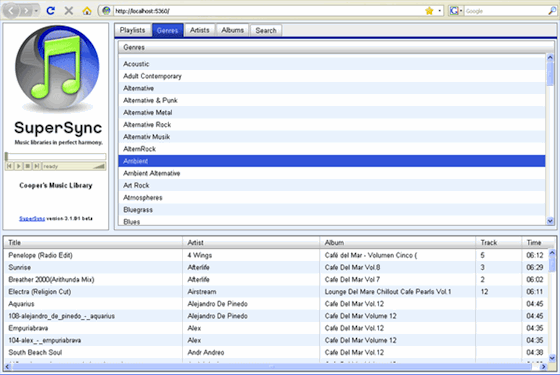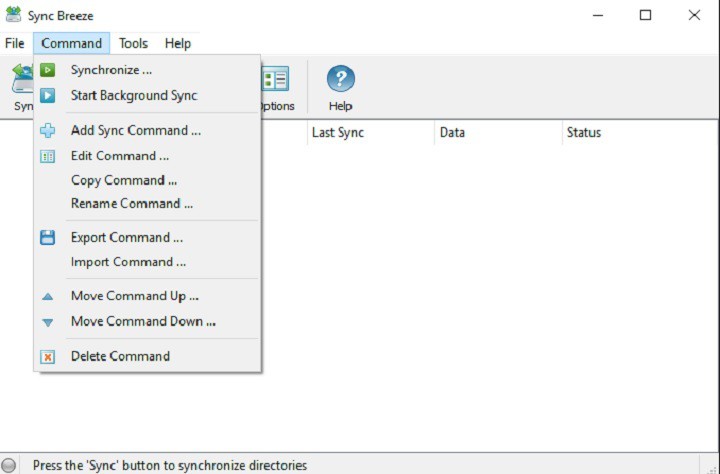
- #SUPERSYNC LIBRARY SYNC WINDOWS 10 HANGS HOW TO#
- #SUPERSYNC LIBRARY SYNC WINDOWS 10 HANGS WINDOWS 10#
- #SUPERSYNC LIBRARY SYNC WINDOWS 10 HANGS PC#
The wide use of NGSC with such as data volume does not bode well.
#SUPERSYNC LIBRARY SYNC WINDOWS 10 HANGS HOW TO#
The affected users didn't mention that problem until recently, so now I'm stuck with possibly hundereds of unsynced (on users device) files littered around that folder structure and now idea which ones and no idea on how to get that thing to sync again. items sync limit of 100.000 for NGSC after which the sync becomes unstable. Little did I know that the NGSC limits are not the same as the SPO limits, namely max.
#SUPERSYNC LIBRARY SYNC WINDOWS 10 HANGS WINDOWS 10#
The users were already on Windows 10 v1709 (aka Files on Demand Feature) So I decided to enable OneDrive NGSC sync for that library to alleviate many of the performance and usability issues. msg files isn't sufficient, since you can't view/open attachments in that. Now this folder tree is rather archaic and consists of many many subfolders and unfortunately none dares to start sorting this thing, which makes browsing that folder structure through the web ui rather cumbersome as the loading penalty per folder is too big, especially if you open a folder with many subfolders and sharepoint only ever loads 50 or so per scroll (some keyboard navigation would be awesome). The document library has about 300.000 files is somewhere around 300GB in size. Versioning is turned off on Synology Drive Admin team folders.Hi, a few months we've migrated a rather large folder from a network drive to a SharePoint Online Document Library.
#SUPERSYNC LIBRARY SYNC WINDOWS 10 HANGS PC#
There are no processes running on NAS or PC that appear to be taking up much resources. 900 GB of data transferred in 1 week = 1.49 MB/s (900 GB is a guess since I’m not sure how much is complete) The last 2 folders are ~350 GB each (music + photos) and are still running a week later. 6 of 8 are smaller folders (less than 50 GB) and completed within a few days. Synology drive client is configured with 8 sync tasks.

Looking at the logs of the sinology drive client and what is transferred in 1 minute, it seems to be about 0.67-1 MB/s. Windows task manager shows the process’ network use to range from 0-1 MB/s. The sync has been running for over a week now (for 1.2 TB of data). 1.2 TB of data (175K files – avg 6.85 MB/file).Įven though the same data existed both on PC and NAS, after creating syncs in Synology Drive client, it is re-downloading every single file to the PC. I started with the exact same data on PC and on the NAS. I’m wondering if the slow transfer is by design to minimize use of resources? Or does the Drive client use a different protocol to transfer files compared to copying files via mapped network drives? Maybe there is a problem with my setup? I’d like to improve the speed. On the NAS, direct read/write speed with dd command is 134 MB/s.

Using cat5E Ethernet going through a router.Ĭopying files from NAS to PC (and vice versa) via mapped network drives, yields 110-115 MB/s. The sync between Windows 10 and the NAS using Synology Drive Client is slow – somewhere between 0.5-1.5 MB/s. Using HTTPS locally with self-signed cert.

Over the past month, I set up my first NAS. I rarely look at the hidden notifications area, but just got lucky this time. I wish there had been some sort of indication of this problem within the Synology Drive Client. Prior to that, I could see the count of files being processed would drop by 25 and then jump back up by 25, drop by 25, as it was just stuck in a loop trying to process the problematic files. I deleted those files on computer, then they synced down from the NAS and the speed of the sync increased again. And every few seconds a yellow/orange would briefly appear stating that "File x cannot be synced because it is in use or access is denied". This pops up a very useful window that shows the number of files being processed. To determine if this issue, go to the System Tray Notification area (Windows 10). There were a couple dozen files that had issues syncing and this was causing the sync process to a slow to a trickle.


 0 kommentar(er)
0 kommentar(er)
